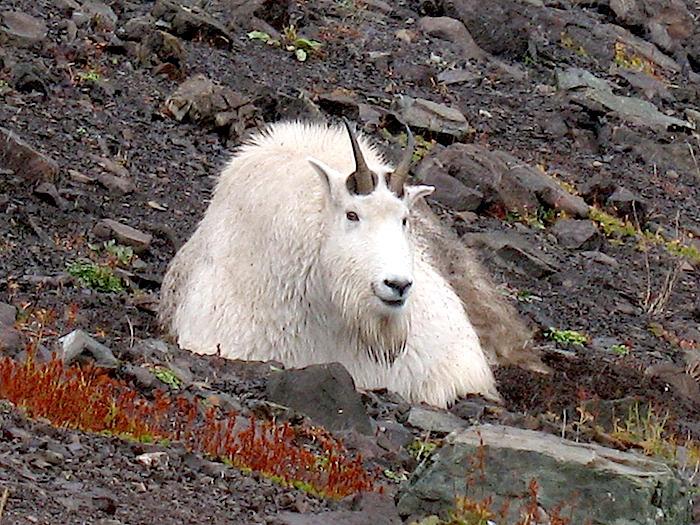
An appellate court has upheld the National Park Service's immunity in the fatal goring of a hiker by a mountain goat/NPS
A split appellate court has upheld the National Park Service's immunity in a case from Olympic National Park where a hiker was fatally gored by an aggressive mountain goat, though the dissenting judge thought the Park Service had been negligent in not killing the "a horned animal bigger than an NFL lineman" before the goring and so was not immune.
Susan Chadd, the wife of of 63-year-old Robert Boardman, had filed a multi-million-dollar lawsuit against the Park Service over his death in Olympic in October 2010. He was protecting other hikers from a goat, estimated at 370 pounds, when it gored him in the thigh and then reportedly stood over him as he bled to death.
An investigation into the park's handling of the case by the law firm the family retained turned up documentation that the goat, known locally as "Klahhane Billy," had established a pattern of "aggressive behavior towards Park Service employees, experienced hikers, Boy Scout troops, (and) families with children." While the park staff took various approaches to instill a fear of humans into the goat, including shooting bean bags at it and paint balls so it could be tracked, none worked, the law firm alleged.
While the majority ruling (attached) from the 9th U.S. Circuit Court of Appeals in the 2-1 decision noted that Olympic officials were aware that the mountain goat had been exhibiting aggressive behavior towards hikers, the judges also pointed out that those officials had wide discretion in deciding how to deal with the goat.
... Olympic’s Mountain Goat Action Plan lists three forms of hazing as appropriate incident management techniques, but it does not specify how or when they should be deployed. The Mountain Goat Action Plan does not even mention animal destruction, in contrast with the Cougar Action Plan. There was, therefore, no extant statute, regulation, or policy directive that required Park officials to destroy the goat prior to Boardman’s death.
... Chadd might very well be correct that Park officials abused their discretion in a tortious manner, but, at step one of the discretionary-function-exception analysis, all that matters is that there was, in fact, discretion.
In his dissent, Senior Circuit Judge Andrew J. Kleinfeld maintained park officials were indeed negligent in not killing an animal they knew posed a threat to hikers.
"Letting an identified aggressive 370-pound goat threaten park visitors and rangers for years until it killed one amounted to a failure to implement the formally established park policy for managing dangerous animals. Written park policy provided a series of steps for dealing with animals dangerous to park visitors, from frightening the animal away to removing or killing it," he wrote. "The park had used the earlier steps, including repeatedly shooting the goat with nonlethal loads such as beanbags, but they did not work. Yet the superintendent left the animal free to terrorize tourists for another summer season instead of following the next step of the written policy, removing or killing it."
In conclusion, Judge Kleinfeld wrote , "This case is analogous to the routine tort case, where a homeowner has a fierce dog that has attacked people and bitten one, but does not get rid of the dog until after it has torn some child’s face off. This was 'ordinary garden variety negligence' that the government must compensate, not 'decisions of social, economic, or political policy' for which the statute preserves its immunity."



Comments
I am a Citizen of the USA. I am "native" to all 50 States, the District of Columbia, and all US Territories.
Especially, I am "native" to all Federal lands. (E.g., National Parks, National Forests, National Monuments.)
Inaccurate use of the term native would explain why it is used above in 'not-really' quote marks.